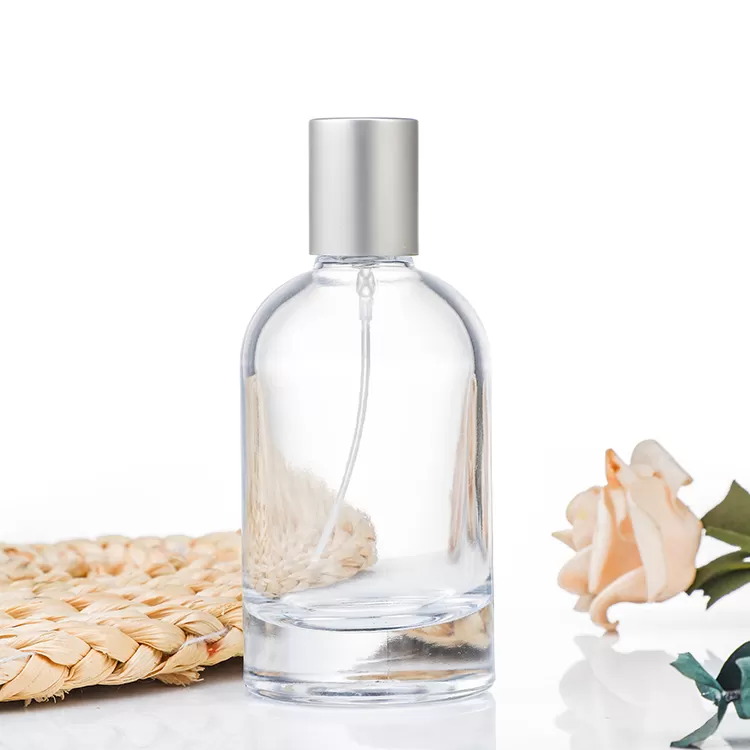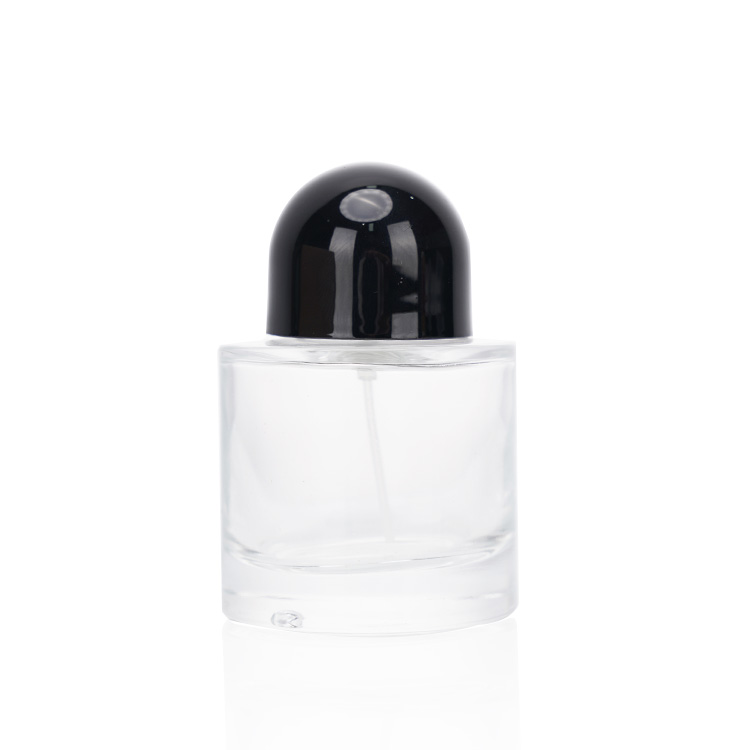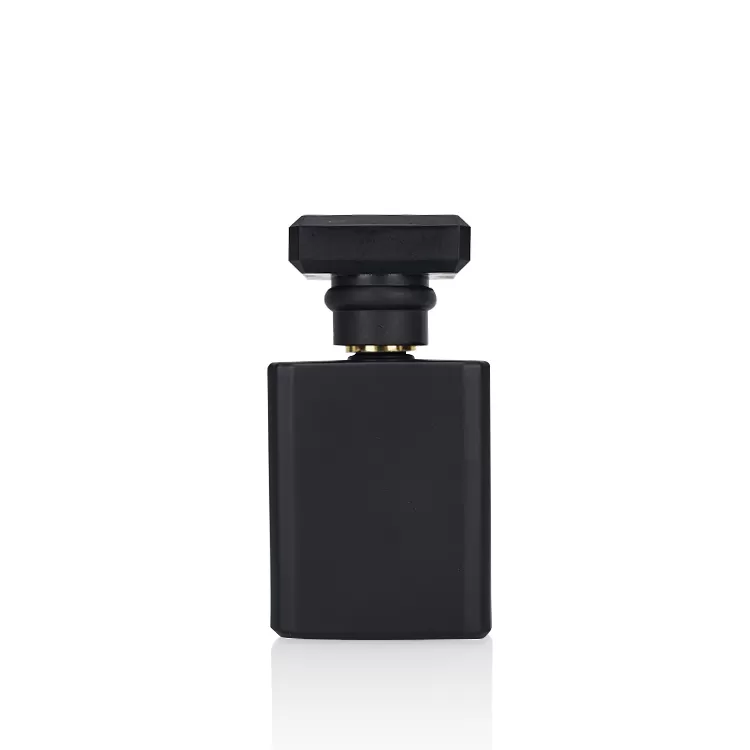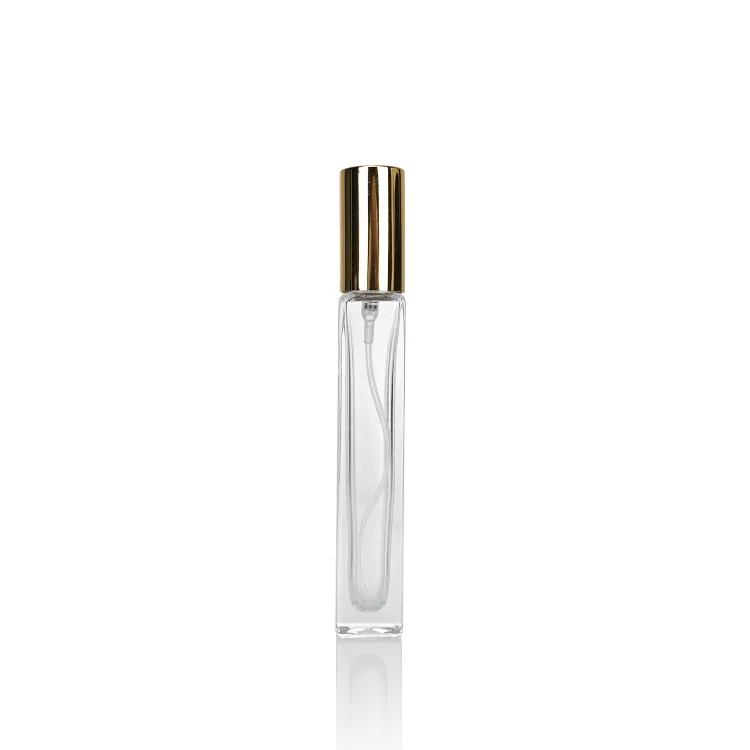The Captivating World of Perfume Bottle Design: Shapes, History, and Artistry
04-24-2025
The perfume bottle is far more than a simple vessel; it's a statement piece, a work of art, and the first tactile interaction a consumer has with a perfume. Its design whispers secrets about the scent within, hinting at luxury, romance, or modernity. Understanding the evolution, artistry, and variety of perfume bottle shapes provides valuable insight not just for collectors, but for businesses involved in the perfume industry, especially those sourcing glass bottle packaging. This article delves into the fascinating history of perfume bottles, explores iconic bottle designs, and discusses why these perfume containers are so crucial to a fragrance's identity, making it essential reading for anyone interested in perfumery, packaging design, or the sourcing of these beautiful objects.
What Makes a Perfume Bottle More Than Just a Container?
Think about your favorite perfume. What comes to mind first? Often, it's the bottle shape or design, even before the scent itself. This isn't accidental. Perfume bottles aren’t just containers; they are meticulously crafted pieces of artistry designed to capture the essence of the fragrance they hold. The bottle’s design serves as a visual and tactile introduction, setting expectations and creating desire. It’s a key element of branding, helping a perfume stand out in a crowded marketplace. A luxurious scent demands packaging that reflects its quality and elegance.
From intricate antique pieces to sleek, minimalist modern perfume bottles, the design style communicates volumes. Does the perfume bottle evoke vintage glamour, modern sophistication, or playful energy? The materials used (often high-quality glass), the colors, the stopper design, and the overall silhouette all contribute to the narrative. For many, collecting perfume bottles is akin to collecting art. Each bottle tells a story, not just of the perfume inside, but of the era it was created in, the perfume brand's identity, and the evolution of aesthetic trends. It's a blend of marketing, art form, and functional design, making the perfume bottle a truly unique object.
As a manufacturer based in China with seven production lines dedicated to glass packaging, we at Glint see firsthand how crucial perfume bottle design is for our clients, particularly those in competitive markets like the USA and Europe. Businesses like Mark Thompson's, which source containers for cosmetic brands, understand that an eye-catching perfume bottle can significantly impact sales. It’s the perfume packaging that often makes the first impression, drawing the customer in before they even experience the fragrance.

How Did Ancient Civilizations Store Their Precious Scents?
The origins of perfume stretch back thousands of years, and naturally, so does the need for perfume containers. Early civilizations like the Egyptians, Greeks, and Romans held perfume in high regard, using fragrant oils and unguents for religious ceremonies, personal hygiene, and medicinal purposes. The earliest perfume vessels were far from the glass bottle designs we see today. They were often made from materials readily available and easily shaped, such as terracotta, alabaster, stone, and even hollowed-out gourds.
Egyptians, masters of early perfumery, crafted beautiful containers from materials like alabaster, which had the benefit of keeping the contents cool. They also used faience (a type of glazed ceramic) and later, core-formed glass. These early perfume bottles were often ornate, reflecting the value placed on the precious scent within. Examples found in tombs showcase intricate decorations and unique shapes, demonstrating an early appreciation for the artistry of the container itself.
The Greeks and Romans continued this tradition, developing their own styles. Aryballoi (small spherical or globular flasks) and alabastra (tubular or pointed-bottomed vessels) were common forms used for holding oils and perfume. While glassmaking techniques existed, glass wasn't the dominant material for perfume bottles until later periods. These early perfume containers highlight a long-standing human desire to not only create beautiful scents but also to house them in equally appealing vessels, laying the groundwork for the evolution of perfume packaging.
What Role Did Glass Play in the Evolution of the Perfume Bottle?
The invention and refinement of glassmaking techniques revolutionized perfume packaging. While glass was used sporadically in earlier times (like the core-formed glass in Egypt around the 1st century BCE), it was the Roman development of glassblowing around 50 BCE that truly paved the way for the glass bottle to become the preferred container for perfume. Glass offered several advantages: it was non-porous, preventing the precious fragrance from evaporating or becoming contaminated, and it allowed the color and clarity of the perfume to be seen.
Initially, Roman glass perfume bottles were relatively simple in design. However, as techniques advanced, artisans began creating more decorative forms. After the fall of the Roman Empire, glassmaking knowledge was preserved and advanced in the Middle East, particularly in Syria and Persia. Venetian glassmakers later became renowned during the Renaissance, producing exquisite and delicate glass bottles, often adorned with intricate details. This period saw the perfume bottle truly begin its journey towards becoming an art form in its own right.
The transparency and versatility of glass allowed for greater artistry in perfume bottle design. It could be colored, cut, engraved, enameled, and gilded, offering endless possibilities for perfume creators to express the nature of the scent. The ability to mold glass into various shapes also became crucial for branding. While early perfume was often purchased in simple vials and transferred to personal, more ornate flacons at home, the development of glass manufacturing set the stage for the perfume bottle itself to become an integral part of the perfume product sold to the consumer.
How Did Perfume Bottles Change During the 18th and 19th Centuries?
The 18th and 19th centuries marked significant periods in the evolution of the perfume bottle, driven by changing tastes, technological advancements, and the growing popularity of perfume among the European aristocracy and burgeoning middle class. Perfume bottles of the 18th century often reflected the opulence of the Rococo period. Think delicate porcelain, often painted with pastoral scenes or floral motifs, sometimes shaped like figures or objects. Gilded metal mounts and intricate stoppers were common. Glass also remained popular, with techniques like cut glass and enameling adding to the elegance and luxurious feel. Bottles of the 18th century were personal treasures, displayed on dressing tables.
The Industrial Revolution in the 19th century brought significant changes to the manufacturing of perfume bottles. Mass production techniques made glass bottles more affordable and accessible. While high-end, handcrafted perfume bottles continued to be made, simpler, molded glass designs became more common. This era saw the rise of classic shapes that are still referenced today, such as cylindrical and rectangular forms. Decoration might include pressed patterns, labels, and less elaborate stoppers compared to the previous century. It was also during this time that perfume houses began to establish distinct identities, sometimes using a specific bottle shape or label style as part of their branding.
Towards the end of the 19th century, styles began to shift again, influenced by movements like Art Nouveau. This period saw a move towards more organic forms, flowing lines, and nature-inspired motifs in perfume bottle design. Materials like frosted glass perfume bottles gained popularity. This transition set the stage for the explosion of creativity in perfume bottle design that would characterize the 20th century perfume landscape. The history of perfume bottles shows a continuous interplay between artistic trends, technological capabilities, and the cultural significance of perfume itself.

What Impact Did Art Nouveau and Art Deco Have on Perfume Bottle Design?
The early 20th century perfume world was dramatically shaped by two major artistic movements: Art Nouveau and Art Deco. These distinct schools of design left an indelible mark on perfume bottles, transforming them into miniature sculptures that perfectly captured the spirit of their times. The Art Nouveau style, flourishing roughly from the 1890s to the 1910s, emphasized flowing, organic lines, inspired by nature. Perfume bottles from this era often featured asymmetrical shapes, floral or insect motifs, and delicate, ethereal designs. Materials like frosted glass, enamel, and silver overlays were popular, contributing to the movement's emphasis on craftsmanship and intricate detail. René Lalique, a master glassmaker, became famous for his exquisite Art Nouveau perfume bottles, collaborating with perfumers like François Coty.
Following Art Nouveau, the Art Deco movement, which peaked in the 1920s and 1930s, offered a stark contrast. Embracing modernity, technology, and geometric forms, Art Deco perfume bottle design featured bold lines, symmetrical shapes (like ziggurats or skyscrapers), strong colors (often black, gold, silver, or vibrant jewel tones), and luxurious materials. Bakelite and early plastic bottles sometimes appeared alongside glass. Bottles became streamlined and stylized, reflecting the dynamism and glamour of the Jazz Age. Iconic perfume bottles like the original Chanel No. 5 (though minimalist, its clean lines resonated with the era's functionalist aspect) and Guerlain's Shalimar reflect Art Deco influences.
These movements cemented the perfume bottle as a crucial element of modern art and packaging design. They demonstrated how a designed perfume bottle could encapsulate a fragrance's character and appeal to contemporary aesthetics. The emergence of famous perfume manufacturers during this period further solidified the link between a unique perfume bottle and brand identity, a principle that remains central to the perfume industry today.
Why is the Shape of a Perfume Bottle So Important?
The bottle shape is arguably one of the most defining characteristics of a perfume bottle. It's the silhouette, the form that first catches the eye and communicates the perfume's intended message. Shape works on both a conscious and subconscious level. A sleek, angular bottle shape might suggest a modern, bold, or masculine scent, while soft curves or oval shapes often imply femininity, romance, or softness. The choice of perfume bottle shapes is a fundamental aspect of designing a perfume bottle.
Functionally, the bottle shape must be practical – stable enough to stand on a surface and comfortable to hold and use. But beyond practicality, the shape is pure expression. It helps differentiate the perfume on the shelf, making it instantly recognizable. Think of iconic perfume bottles – their shapes are often inseparable from the perfume brand itself. This visual identity is critical in a market saturated with choices. A unique bottle shape can become a brand's signature, enduring for decades and becoming a classic perfume identifier.
Moreover, the bottle shape contributes significantly to the overall sensory experience of the perfume. Holding the bottle, feeling its weight and contours, is part of the ritual of applying fragrance. The shape can enhance the feeling of luxury or elegance. It interacts with light, showcasing the color of the perfume and the quality of the glass. Ultimately, the bottle shape helps tell a story, creating an emotional connection with the consumer before the scent even reaches their nose. It transforms the perfume bottle from a mere container into an object of desire and a key component of the perfume's allure.
What Are Some Classic and Popular Perfume Bottle Shapes Today?
While innovation in perfume bottle design continues, certain classic shapes have stood the test of time and remain popular foundations for modern perfume bottles. These shapes often provide a balance of elegance, practicality, and a versatile canvas for branding elements. Understanding these archetypes is helpful for anyone involved in perfumery or sourcing glass bottles.
Here are some enduring perfume bottle shapes:
- Rectangular/Square: Clean, classic, and often conveying sophistication or modernity. Think Chanel No. 5 or many masculine fragrances. This shape offers ample flat surface area for labels and branding. Explore options like our Square Shape Empty Glass Diffuser Bottle 150ml.
- Cylindrical: Simple, elegant, and versatile. Easily adapted for various sizes and stopper designs. Often used for both feminine and masculine scents.
- Oval/Rounded: Typically associated with femininity, softness, and fluidity. These perfume bottles often feel comfortable and organic in the hand.
- Flask/Oblate: A flattened shape, often rounded or rectangular. This style can feel classic or contemporary depending on the details. See examples like the Luxury 30ml Flat Shape Perfume Glass Bottle.
- Figurative/Sculptural: Bottles designed to resemble objects, animals, or human forms. These are often highly distinctive and aim to make a strong statement, though they can sometimes sacrifice practicality.
Beyond these classic shapes, modern perfume bottles embrace unique shapes and asymmetry. Designers experiment with geometry, texture, and innovative closures. Minimalist designs remain popular, focusing on the purity of the glass and the perfume color. Conversely, highly decorative and ornate perfume bottles cater to a desire for luxury and collectibility. The trend towards smaller, travel-sized perfume bottles also influences shape, demanding portability and durability, like our 10ml Portable Fragrance Perfume Bottle for Travel. Ultimately, the choice depends on the perfume brand's identity, the target audience, and the story the fragrance aims to tell.

How Are Modern Perfume Bottles Made?
The manufacturing of perfume bottles, especially the high-quality glass perfume bottles favored by most brands, is a sophisticated process combining technology and craftsmanship. As a factory owner with extensive experience in glass production, I, Allen, can attest to the precision required. The process generally begins with raw materials – primarily silica sand, soda ash, and limestone – melted at extremely high temperatures in a furnace.
Once molten, the glass is formed into the desired bottle shape. The most common method for mass production is the "Blow and Blow" or "Press and Blow" process using automated IS (Individual Section) machines.
- Gob Formation: A precise amount of molten glass (a "gob") is cut.
- Parison Formation: The gob enters a blank mold. In Press and Blow, a plunger presses the glass to form the neck finish and a preliminary shape (parison). In Blow and Blow, compressed air first forms a cavity, and then more air shapes the parison.
- Final Molding: The parison is transferred to the final blow mold, where compressed air inflates it to the exact bottle shape and details of the mold.
- Annealing: The newly formed perfume bottle is cooled slowly in a special oven called a lehr. This annealing process removes internal stresses, preventing the glass from shattering easily. This step is crucial for durability – a key concern for buyers like Mark Thompson.
- Inspection: Bottles are made subject to rigorous quality control. Automated inspection machines check for defects like cracks, bubbles (seeds), thin walls, or incorrect dimensions. Visual inspections by trained personnel are also common.
Decoration, such as frosting, spraying, screen printing, or hot stamping, occurs after the basic perfume bottle is formed and inspected. Ensuring quality at each step is paramount to delivering a luxurious and reliable product that meets international standards (like FDA compliance for cosmetic packaging).
Can Perfume Bottles Be Customized for Brands?
Absolutely! Customization is a cornerstone of the modern perfume industry, and the perfume bottle is a primary canvas for brand expression. While standard bottle shapes offer efficiency, a truly unique bottle design can elevate a perfume brand and create a lasting impression. As manufacturers, we frequently collaborate with clients to bring their unique visions to life.
Customization can range from simple modifications to completely bespoke designs:
- Shape Modification: Altering the shoulders, base, or profile of a standard bottle shape.
- Custom Shapes: Creating entirely new molds for unique, proprietary perfume bottle shapes. This offers maximum brand differentiation but involves higher initial tooling costs. We can help design shapes like hearts, stars, or abstract forms based on the brand's concept.
- Surface Treatments: Applying finishes like frosting, matte coatings, or iridescent effects.
- Color: Manufacturing the glass in specific colors or applying color through spraying techniques (internal or external).
- Decoration: Adding logos, patterns, or text using methods like screen printing, hot stamping, decals, or laser engraving.
- Closures: Designing custom caps, spray pumps, or collars that complement the perfume bottle design.
Offering free design assistance or working closely with a brand's design team is common. The goal is to create a cohesive perfume packaging experience where the perfume bottle perfectly reflects the fragrance and the brand's identity. Designing a perfume bottle that is both aesthetically pleasing and manufacturable requires expertise. For businesses targeting specific niches, like the high-end European perfume bottles market or creating a signature bottle for a new launch, customization is key. Bottles has become a popular way to differentiate in a crowded market.

What Should Businesses Look for When Sourcing Perfume Bottles?
For business owners and procurement officers like Mark Thompson, sourcing perfume bottles, particularly from overseas manufacturers in countries like China, requires careful consideration beyond just the initial price quote. Ensuring quality, reliability, and smooth logistics is crucial for success. Based on my experience as a factory owner (Allen) dealing with clients from the USA, North America, Europe, and Australia, here are key factors to prioritize:
-
Quality Assurance: This is paramount.
- Material Quality: Ensure the supplier uses high-quality glass suitable for perfume (e.g., high flint glass for clarity).
- Manufacturing Consistency: Look for manufacturers with robust quality control processes at each stage (melting, forming, annealing, inspection). Ask about their defect rates and inspection methods.
- Durability & Functionality: The perfume bottle must be durable, leak-proof, and compatible with the chosen closure (spray pump, cap). Request samples for testing.
-
Certifications and Compliance: Essential for market access, especially in the US and EU.
- Material Safety: Verify compliance with regulations like FDA (for cosmetic contact materials) or EU standards (e.g., REACH).
- Certificate Validity: Be cautious of certificate fraud – a pain point Mark has experienced. Ask for original copies or verify certificates with the issuing body if possible. Reputable suppliers should readily provide valid documentation.
-
Supplier Reliability and Communication: Critical for avoiding delays and misunderstandings.
- Experience & Reputation: Choose suppliers with a proven track record, especially in exporting to your target market. Look for factory audits or references.
- Communication: Efficient and clear communication is vital. Ensure the sales representatives understand your requirements (both commercial and technical, even if you lack technical expertise like Mark). Responsiveness is key.
- Production Capacity: Verify the factory (like ours with 7 production lines) can handle your order volume and meet deadlines.
-
Logistics and Payment: Practical considerations for international trade.
- Shipping Expertise: Does the supplier understand international shipping requirements, packaging standards for fragile goods, and documentation needed for customs clearance?
- Payment Terms: Discuss and agree on clear payment terms (e.g., T/T, L/C) and ensure they are secure.
-
Customization Capabilities: If required, assess the supplier's ability to deliver custom designs, colors, and decorations accurately and consistently. Ask about their design support and mold-making process. Our 50ml Elegant Flat Perfume Glass Bottle shows the kind of classic elegance achievable.
Finding a supplier through exhibitions or Google search is common, but due diligence is crucial. Partnering with a reliable, transparent, and quality-focused manufacturer minimizes risks like shipment delays and ensures the final perfume bottle meets the elegance and standards expected by end-consumers.
Key Takeaways:
- More Than Containers: Perfume bottles are works of art, crucial branding elements, and the first point of contact with a fragrance.
- Rich History: The evolution of the perfume bottle reflects technological advancements and artistic movements, from ancient pottery to Venetian glass, Art Nouveau, and Art Deco designs.
- Shape Matters: The bottle shape communicates the perfume's essence, aids recognition, and enhances the user experience. Classic shapes endure, while unique designs offer differentiation.
- Glass is Key: Glass became the preferred material due to its inertness, transparency, and versatility, allowing for intricate perfume bottle design.
- Modern Manufacturing: High-quality glass perfume bottles require precise manufacturing processes (melting, forming, annealing) and rigorous quality control.
- Customization Power: Brands can leverage custom bottle shapes, colors, and decorations to create a unique identity and tell a story.
- Smart Sourcing: Businesses sourcing perfume bottles must prioritize quality, reliable certifications, clear communication, logistical competence, and supplier reputation to avoid common pitfalls. Choosing the right manufacturing partner is essential for success in the competitive world of fragrance.








